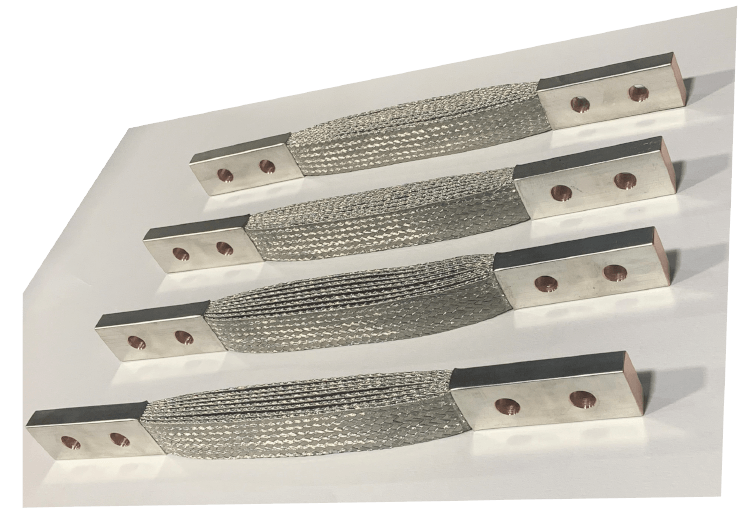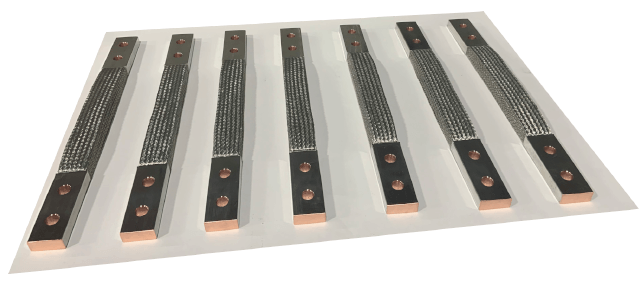Ground Straps & Shunts
Ground Straps & Shunts
| Sycor Part No | Length | Temp | Voltage Rating | Braid Width (In) | Braid Thickness (In) | |
|---|---|---|---|---|---|---|
| Ground Straps & Shunts | Max 6ft | 20°C to 80°C | 3,000A | .75” to 6” | .25” to 1.0” |
|

What are Electrical Shunts?
Electrical shunts are a type of resistor designed to be used as a measuring instrument for low and high voltage levels. The electrical shunt's accuracy is measured at ¼% of the value-rated, and it's recommended that the shunts don't exceed 2/3 the IEEE rated current. If temperatures exceed 80°C on the shunt, then resistance may drift, and if it goes beyond 140°C, the resistance may become permanently altered. Shunts should typically reach 80% of its operating temperature within the first 2 minutes of operation. Leads are an important part of how electrical Shunts are applied to applications, as it isn't a good idea to mount shunts close to the instrument reading device. It also isn't recommended to have longer lead lengths, but if necessary additional drops in load must be considered when applying instrument reading devices. When connecting shunts, it should also be done on the grounded side of the line.
Temperature Rating of Electrical Shunts:
20°C - 80°C
Voltage Rating of Electrical Shunts:
3,000A
Application of Electrical Shunts:
Electrical Shunts can handle moderate temperature environments and are able to be successfully applied in mining industries, equipment manufacturing and distribution of power, nuclear applications and original equipment manufacturing. Being corrosion-resistant, electrical shunts are able to handle moderate amounts of handling and be applied in specific hazardous environments.

There are always things to consider when purchasing wire, and the same goes for shunts. There are 4 major factors to take into account:
- Ambient - Temperature elevated or high altitudes
- Temperature rise - Normal, limited or fluctuating
- Duty - Continuous, surge or intermittent
- Environment - Open-air, grouped, closed, forced air
- Combinations of 1 through 4
Any combination of these factors may exist in specific scenarios. When this occurs, it will be necessary to consider all these factors to find the correct rating. Shunts can be placed anywhere a specific current needs to be measured but should be done in a vertical position in order to help with the airflow. Newly developed shunt models allow for more than one input, so multiple inputs and outputs are able to be measured. Shunts work off of ohm's law (Voltage (E) = Current (I) x Resistance(R)) to give the most accurate measuring of current flow through a circuit. Typically used as expansion joints that hold together equipment misalignment, the customizable Shunts are able to replace Voltmeter or Multimeter because of the extremely higher voltages they can handle for extended amounts of time.
Choose from our selection of building wire:
- Shunts Bare Copper
- Shunts Silver
- Shunts Tinned
Have any questions about possible Shunts or the type applications they’re used for? We have the answers! Whether you are unsure of which type best suits your application or are just curious about wires in general, Sycor’s dedicated team is at your disposal. Request a quote online, email or call us today!
All specifications are provided for reference only. Specifications will vary between manufacturers and are subject to change without notice. Be sure to check with your sales rep for the most accurate and up to date information when ordering.

